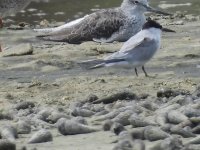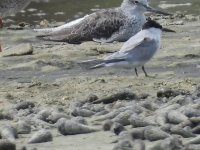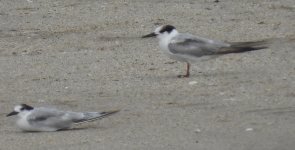Hi, have been reading a bit on the issues in accurately idenifying saunders's and little terns and understand that in non-breeding, non-flying birds it is extremely difficult. But on the basis that not all knowledge is written down, I am risking asking for any help on whether these photos show one or the other. Of course, perhaps they are something else again
There were quite a few sandwich terns (and greater and lesser crested) nearby but I don't see any yellow tip on this ones, and they seemed "closer to the ground".
Photos taken on the coast just south or west of the airport in Muscat, near a small creek flowing into the ocean.
Thank you in advance for all comments, suggestions and criticisms
steve
There were quite a few sandwich terns (and greater and lesser crested) nearby but I don't see any yellow tip on this ones, and they seemed "closer to the ground".
Photos taken on the coast just south or west of the airport in Muscat, near a small creek flowing into the ocean.
Thank you in advance for all comments, suggestions and criticisms
steve







